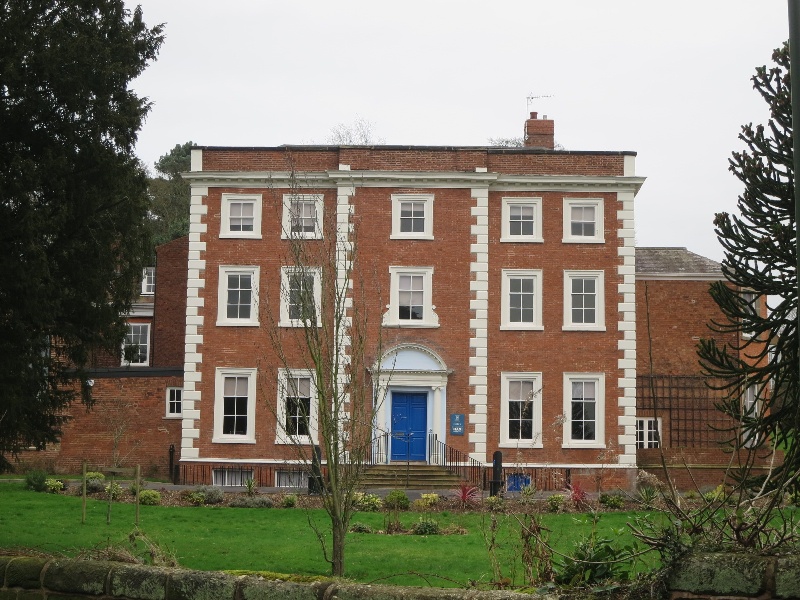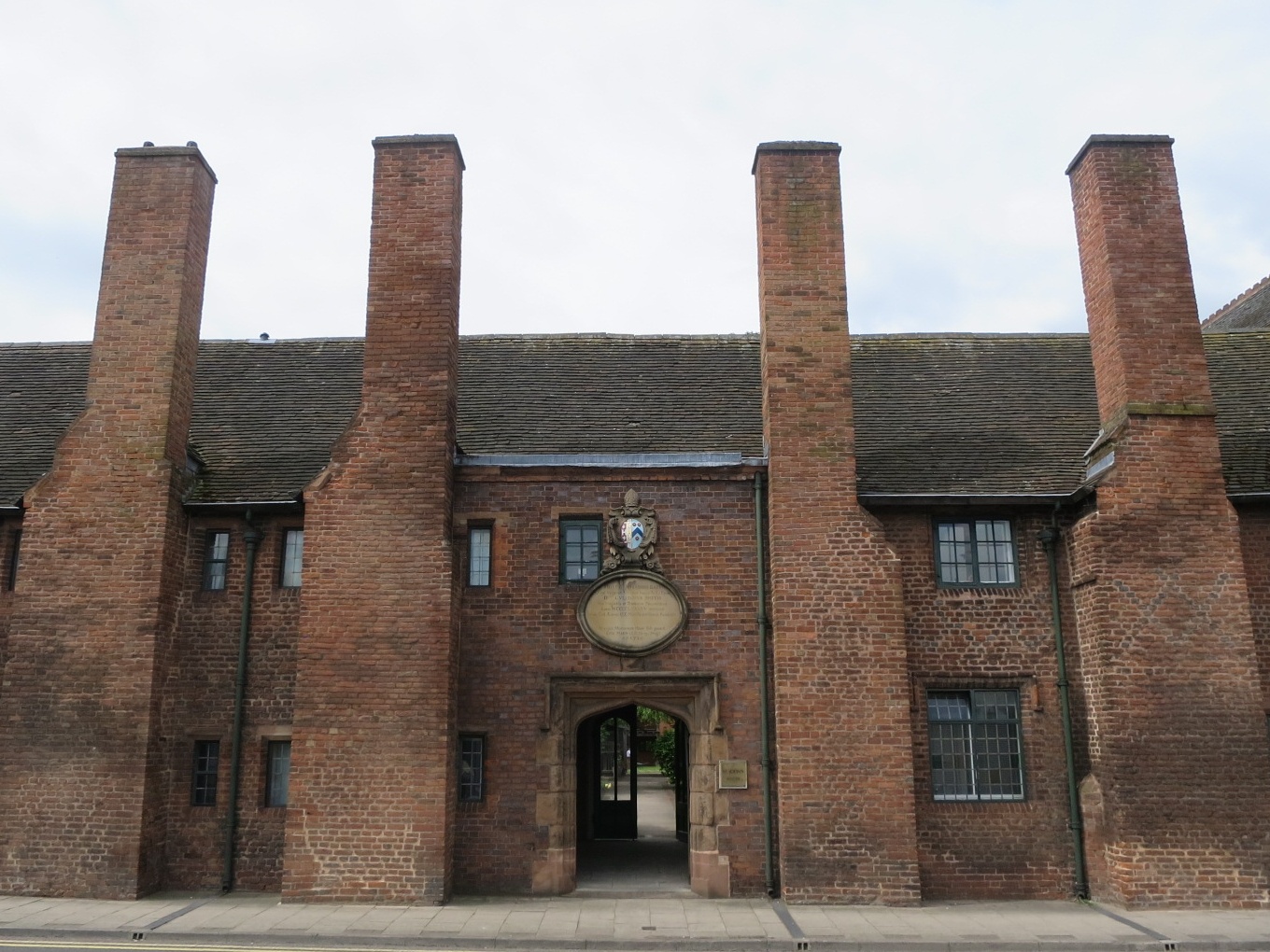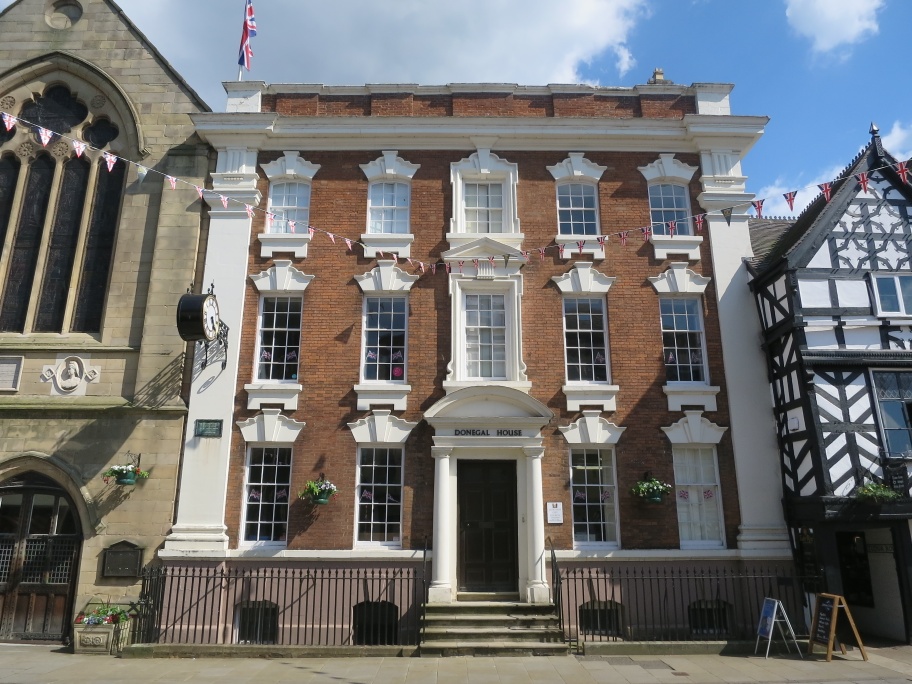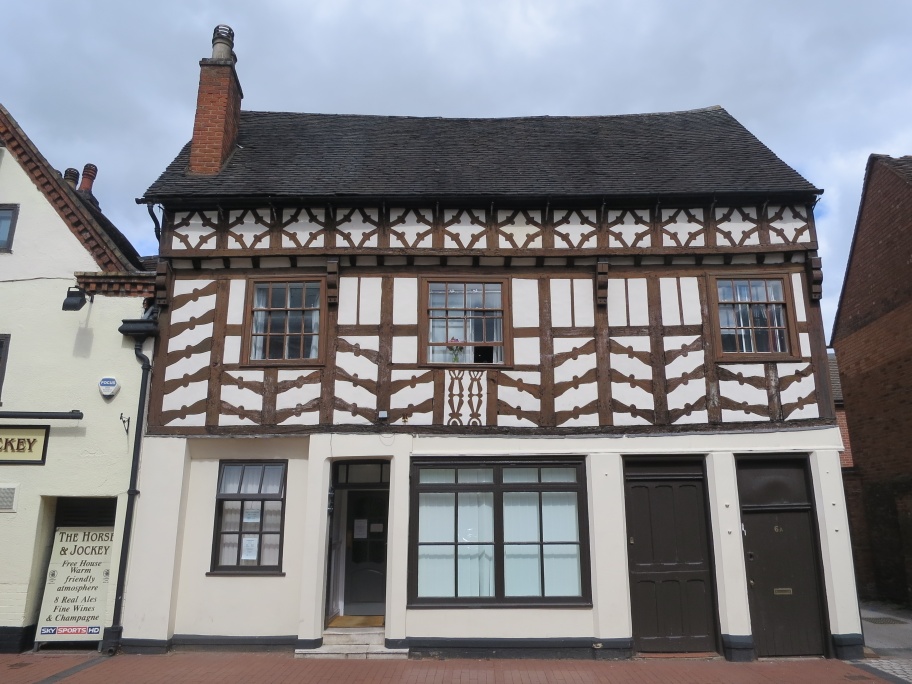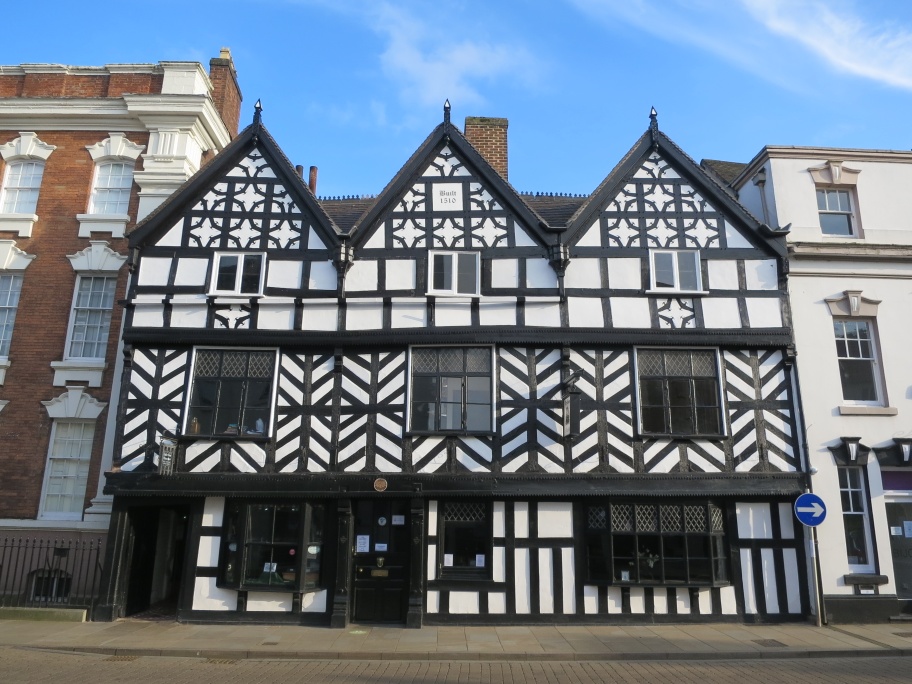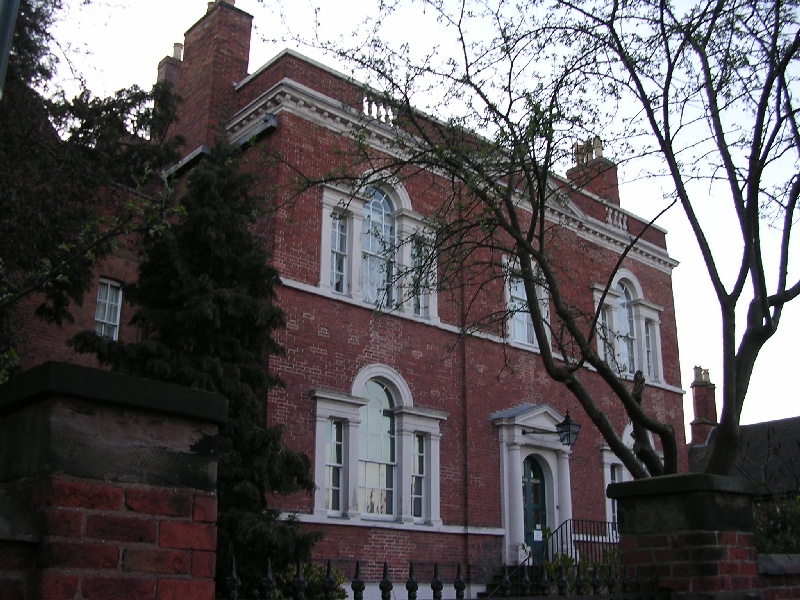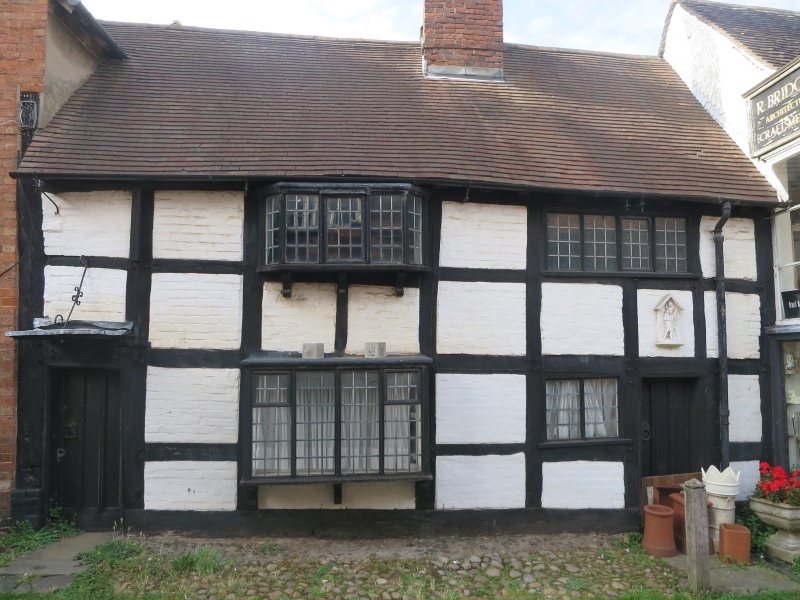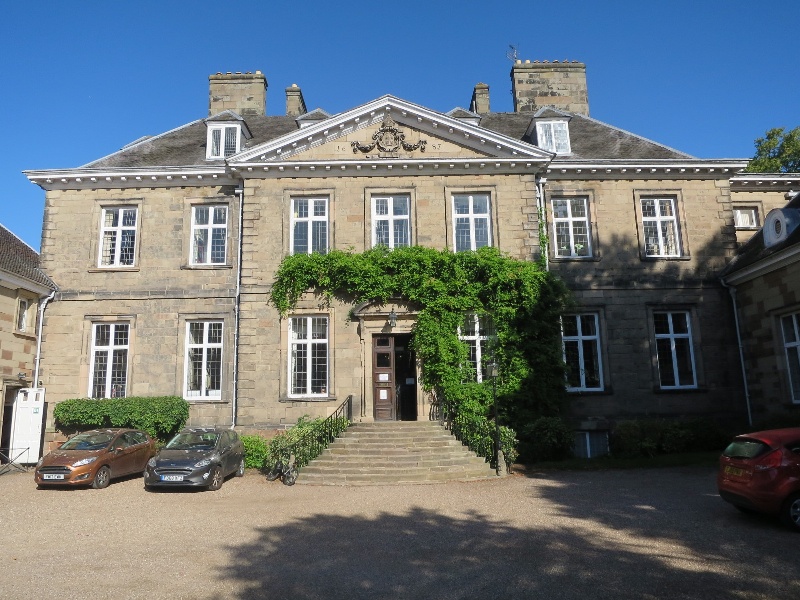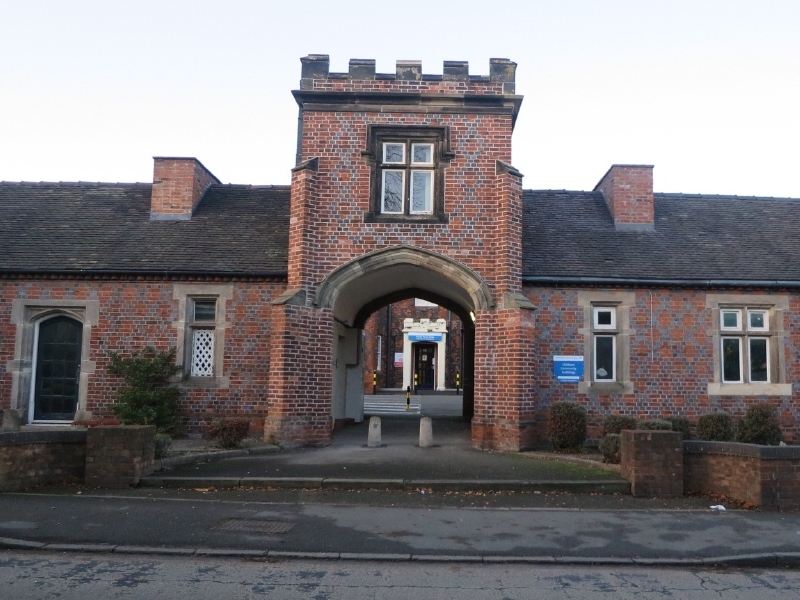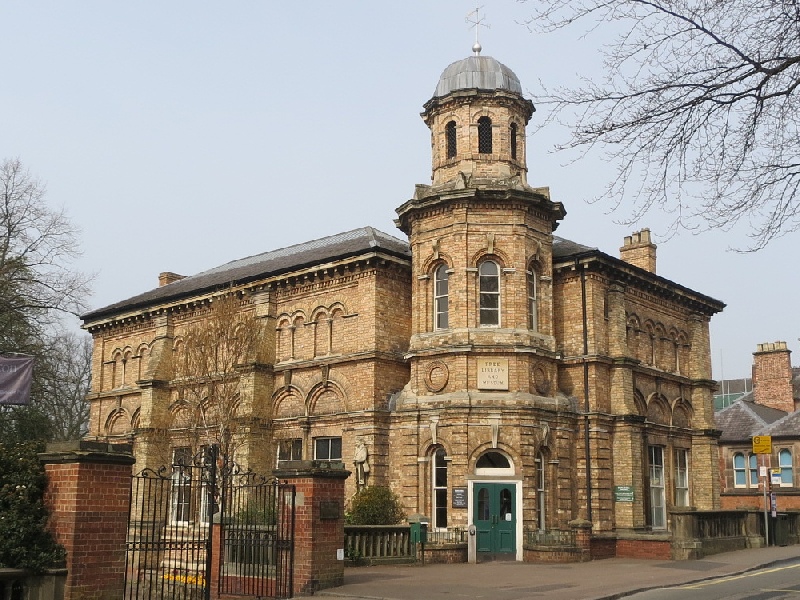|
Ancient and Modern - some Lichfield Buildings
|
| |
Although often thought of as primarily a Georgian City, in reality
buildings from the late medieval to the 20th century can still be
found in Lichfield. The Lichfield City Conservation Area, which
was designated in 1970, contains over 200 listed buildings and many
others of historic interest within its boundary. The buildings we
have featured here are just a small selection of what can be seen
today.
|
| |
Cruck House
The medieval Cruck House on Stowe Street, originally 2 cottages dating
from the late 15th or early 16th century, was restored in 1971 as part
of a larger Lichfield City Council regeneration scheme. This Grade II*
listed building has since served as a local community centre.
Photo - Frank Horsfall, 2005
|
|
| |
|
|
Stowe House
This large 18th century Grade II* listed house, standing prominently on
a hill at the east end of Stowe Pool, was built around 1750 for Elizabeth
Aston. A century later, in 1850, it was the home of the Lichfield banker
and South Staffordshire Railway director Richard Greene. After wartime
service as a school, then postwar use as a nurse's home and a brief
period as a conference centre, the house was sold in 1968 to become a
Management Training Centre. In December 2019 it was converted into
four self-contained office suites.
Photo - Lesley Bushell, 2020
|
| |
St John without the Barrs
The Hospital of St John without the Barrs on St John Street was located
just outside the City's Culstrubbe gate. This Grade I listed property is
said to be one of the finest 15th century brick buildings in the country
and is still in use today.
Photo - Lesley Bushell, 2019
|
|
| |
|
|
Donegal House
This impressive 1730s town house is reputed to have been designed
by Francis Smith of Warwick for James Robinson, a wealthy Lichfield
merchant. The Grade II* listed building is now used as offices by
Lichfield City Council.
Photo - Lesley Bushell, 2022
|
| |
Sandford Street
This mid to late 16th century timber framed house in Sandford Street
was a butchers shop for over 50 years. The Grade II listed building
was renovated in 2019 with modern office space on the ground floor.
It is pictured here shortly after restoration.
Photo - Lesley Bushell, 2020
|
|
| |
|
|
Beacon Hill House
The former Beacon Hill House on Beacon street was built in 1750 as
a private house but was known as "The Angel Croft Hotel" for most
of the 20th century. After the Hotel closed it stood empty for over
ten years. In 2020 this Grade II* listed building, which still
retains many original features, was fully restored and converted
into high quality apartments.
Photo - Lesley Bushell, 2020
|
| |
The Tudor Café
The Tudor Café on Bore Street is a richly ornamented timber framed
house, probably dating from the 16th century. This Grade II* listed
building was formerly known as "Lichfield House". It was restored
in 1974 by the local firm of Bridgeman's Ltd, becoming one of the 285
buildings in the country to win an European Architectural Heritage
Year award that year.
Photo - Lesley Bushell, 2021
|
|
| |
|
|
Erasmus Darwin's House
Darwin House on Beacon Street, the former home of Erasmus Darwin, was
built about 1758 on the site of the Common Hall of the medieval Vicars
choral. Following restoration in 1999 this Grade I listed mid-georgian
building has served as a museum, holding a number of objects which were
the property of Erasmus Darwin and his family.
Photo - Frank Horsfall, 2005
|
| |
Quonians Lane
There are several buildings of interest in Quonians Lane on the east
side of Dam Street. No. 1, which is illustrated here, is a late 16th
or early 17th century timber-framed cottage with an interesting canopy
over the entrance. This Grade II listed building is now used as an
antique shop.
Photo - Lesley Bushell, 2019
|
|
| |
|
|
Quarry Lodge
Quarry Lodge on Tamworth Road was built in 1825 for Thomas Rowley, a
physician and notable Lichfield benefactor. Much later, in the 1970s,
it was used as offices by the County Planning Department. This
picturesque, Gothic style, Grade II listed house with twin octagonal
turrets was restored in 1983 and converted to apartments.
Photo - Lesley Bushell, 2019
|
| |
The Bishop's Palace
The Bishop's Palace was built in 1687 by Edward Pierce, replacing
the previous timber framed building that was damaged in the Civil
War. The Grade I listed building is also notable as the residence
of Anna Seward (from 1754 to 1809) and of Gilbert Walmisley. Since
1954 the palace has been occupied by Lichfield Cathedral School.
Photo - Lesley Bushell, 2019
|
|
| |
|
|
St Michael's Hospital
St Michael's Hospital on Trent Valley Road was originally built as the
Lichfield Union Workhouse so is an important part of the City's history.
This Grade II listed Tudor Gothic gatehouse building was designed by
W.B. Moffat & G.G. Scott and opened in 1841. An unusual feature is
the Georgian cupola above the main building.
Photo - Lesley Bushell, 2018
|
| |
Samuel Johnson's Birthplace
Dr Johnson's house on Breadmarket Street is a three storey Queen Anne
town house built in a transitional style merging timber framing and
brick. This Grade I listed building was built around 1707 as the home
and bookshop of Michael Johnson, the father of Samuel Johnson.
Photo - Frank Horsfall, 2005
|
|
| |
|
|
The Free Library
The former Public Library on Beacon Street was built in 1859 by Birdlake
& Lovatt, becoming only the second Free Library in the country. The
building is listed Grade II and, following the re-location of the library
and Lichfield Joint Record Office, has been used since 1998 as a Registry
Office.
Photo - Lesley Bushell, 2019
|
| |

